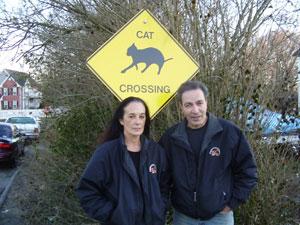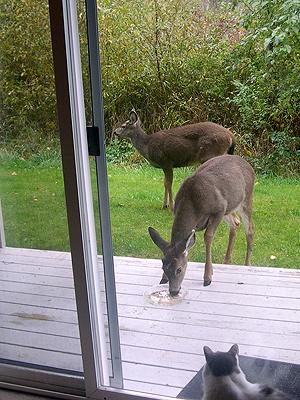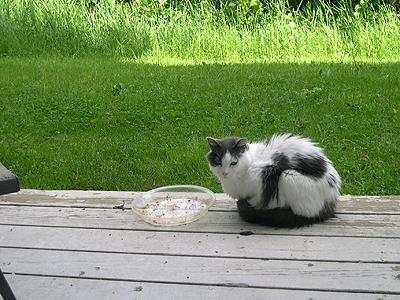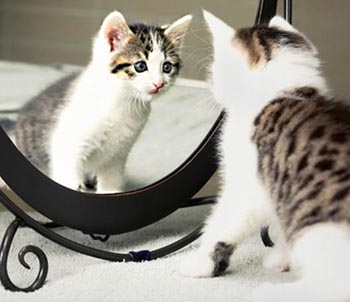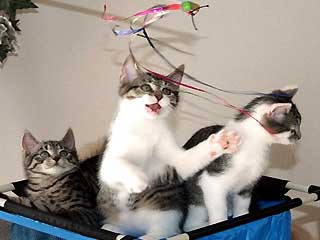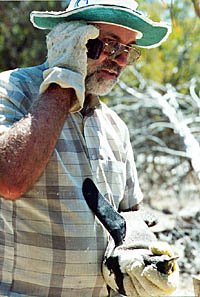PETA's Long History of Killing Cats and Dogs Is Finally Exposed in a North Carolina Courtroom
"The responsibility we have to animals doesn't mean giving them a painless death. It means coping with their challenges like we would a family member or a child."
-- Rich Avanzino, Maddie's Fund.
As everyone knows, life is not fair. In fact, famed attorney Clarence Darrow once declared, "There is no such thing as justice in or out of court."
The lack of justice is especially acute for animals who are, in most instances, abused and slaughtered with impunity. This revolting situation is exacerbated by phony-baloney animal rights groups who not only provide succor to the killers but sometimes join in the carnage themselves. Of all the cancers eating away at the animal rights movement none is more malignant than PETA.
The cognoscenti have long known of the group's crimes. At its Norfolk, Virginia facility, it admits to exterminating eighty-six per cent or more of the cats and dogs that enter its portals. Moreover, it has long been a fierce campaigner for the round up and slaughter of all feral cats.
Due to criticism from cat advocacy groups in the United States, it has been of late doing its domestic killing sub silentio. A perusal of the foreign press will reveal, however, that outside the continental United States it is as bullish on exterminating cats as ever. Par exemple, foreign newspapers often print letters from PETA advocating feline genocide. (See Cat Defender post of March 23, 2006 entitled "South Africans, Supported by Ailurophobic PETA, Are Slaughtering Cats on Robben Island.")

Last summer during the war in Lebanon, PETA recommended that the Lebanese shoot any animals that could not be rescued. (See Cat Defender post of August 10, 2006 entitled "Death Toll Mounts for Cats and Other Animals Slaughtered and Left Homeless in Lebanon by Israeli War Criminals.")
Up until now PETA has always gotten away scot-free with its murders of innocent animals, but that may be about to change. On June 15, 2005, police officers arrested two of its employees for dumping the bodies of cats and dogs that they had killed in a Dumpster behind a Piggly Wiggly Supermarket in Ahoskie, North Carolina. In their van were the bodies of ten dogs and three cats wrapped in black trash bags. In the three weeks leading up to the arrests the bodies of at least eighty cats and dogs were pulled from the same trash receptacle. (See photo below.)
A digital camera containing images of both dead and live animals was also found in the van and this suggests that the killings were photographed in order that they could be enjoyed again and again at a later date. If this is so, it is reminiscent of the behavior of yobs who film their assaults on the homeless.
Arrested were Adria Hinkle, 28, of Norfolk (See mug shot above) and Andrew Benjamin Cook, 25, of Virginia Beach (See mug shot below). In proceedings that got under way January 22nd in Hertford County Criminal Superior Court, the pair is charged with twenty-one counts of animal cruelty, three counts of obtaining property by false pretenses, and seven counts of littering.
The crimes grew out of an arrangement that PETA had with shelters and veterinarian offices in three counties in northeast North Carolina. According to PETA, these shelters were killing cats and dogs with rifles shots to the head as well as in gas chambers so it volunteered to collect the animals and exterminate them with jabs of sodium pentobarbital at its Norfolk facility.
Shelter officials and veterinarians, however, maintain that they were assured by PETA that the animals' lives would be spared and that homes would be found for them. Regardless of the nature of the original understanding, it is now known that the animals were killed immediately after they were surrendered to Hinkle and Cook.

Testimony presented so far tends to back up the shelters and veterinarians. For instance, veterinarian Patrick Proctor, who gave a black cat and two kittens to the accused, told Court TV on January 19th that he was assured that homes could be easily found for them. "They were saying, 'My, what beautiful animals. We will have absolutely no trouble finding homes for these." (See "Trial Set to Start for PETA Workers Caught Euthanizing, Dumping Cats and Dogs.") Hours later they were found dead in the Dumpster.
Last Thursday, Bertie County Animal Control Officer Barry Anderson testified that Hinkle replied, "Yes. No problem. Absolutely" when he asked her if she would be able to find homes for the cats and dogs that he was handing over to her. (See Center for Consumer Freedom's press release of January 25, 2007, "PETA Trial, Day 3.")
Neither the least bit remorseful nor ashamed of its reprehensible conduct, PETA continues to insist that it has a right to kill defenseless cats and dogs. "As the trial is about to start, we remind all interested parties that there was absolutely no cruelty involved in this case, that PETA has only ever helped animals in dire straits in North Carolina, and that if justice is served these facts will be made clear," spokeswoman Erin Edwards told Court TV in the article cited supra. She quite obviously does not consider murder to be cruel.
Shortly after the arrests, Daphna Nachminovitch, who handles issues involving domestic animals for PETA, defended the organization's actions in an op-ed piece for the San Francisco Chronicle. "Critics may condemn PETA for supporting euthanasia, but we are not ashamed of providing a merciful exit from an uncaring world to broken beings."
Even head honcho Ingrid Newkirk is only concerned about the bad publicity the case has generated, not the loss of innocent lives. After labeling the situation in Ahoskie "hideous," she went on to say, "I think this is so shocking it's bound to hurt our work."
To date, PETA has acknowledged that Hinkle and Cook are guilty only of dumping the bodies in Ahoskie rather than transporting them back to Norfolk for cremation. Although Hinkle was suspended from work for ninety days, both she and Cook continue to be employed by the organization and it is footing the bill for a trio of shysters to defend them in court.
Most likely Hinkle and Cook know too much for PETA to fire them. Although the megalomaniacs within the group no doubt honestly believe that they have a god-given right to kill cats and dogs with impunity, they probably would have given the killers the boot a long time ago if they could have done so without fear of them cutting a deal with prosecutors.

Despite the importance of this case, the capitalist media is all but ignoring it. Vivisectors, such as the National Association for Biomedical Research, are delighted of course to see PETA in the dock. Also, the Center for Consumer Freedom (CCF), a longtime advocate of factory farming, vivisection, and other barbaric practices, is providing extensive coverage of the trial on its website (www.petakillsanimals.com) as well as staging protests outside the courtroom. (See photo below.)
Nonetheless, CCF is to be commended for alerting the public to PETA's ongoing killing spree at its Norfolk shelter. If more people had cared, PETA would have been put out of business long ago and the cats and dogs that it killed in North Carolina might still be alive today.
Since PETA's crimes have been well known for so long, the animal rights community's failure to hold it accountable is inexcusable. Even as the trial progresses their silence is deafening.
One notable exception is Maddie's Fund. "The responsibility we have to animals doesn't mean giving them a painless death. It means coping with their challenges like we would a family member or a child," the Fund's Rich Avanzino told Court TV.
The dedicated staff at Moggies was equally outraged to learn of PETA's atrocities. In an e-mail sent to the murderers its spokesperson wrote: "I am very shocked that you still have these two people working for PETA, and even more shocked that you actually have a policy of euthanizing perfectly healthy cats-kittens and dogs-puppies. This to me is not what I thought PETA was about. Until you decide to be what you should be, I will never again support PETA in any way.
"In fact I will be working against your killing policies in any way I can. To say that a mother cat and two kittens would be easy to home and then to callously kill them is sick and horrifying. I just cannot imagine the deaths you are responsible for." (See www.moggies.co.uk.)
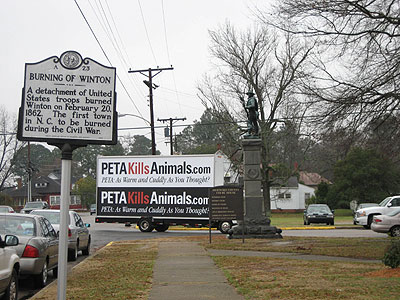
Throughout its history, PETA has done yeomanly work in going after vivisectors, factory farmers, furriers, circuses, and zoos, but its ruthless killing of cats and dogs is inexcusable. Unless it is willing to change its policies and learn to respect the sanctity of all animal life it should be put out of business and its principals jailed.
Furthermore, both the law enforcement community and animal rights groups should launch an immediate investigation into its treatment of cats and dogs in the United States and abroad. Secondly, authorities in North Carolina should not only take a long hard look at conditions at shelters and veterinarian offices but, above all, outlaw the killing of all animals by whatever means.
The trial resumes today and the jury could get the case before the close of the week.
Photos: Court TV (Hinkle and Cook), Cal Bryant of the Roanoke-Chowan News-Herald (dead cats and dogs), and Lauren King of the Virginian Pilot (Center for Consumer Freedom protest).
